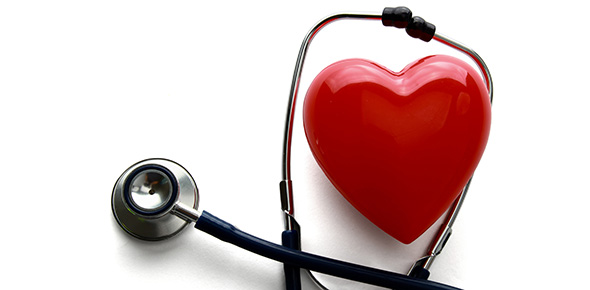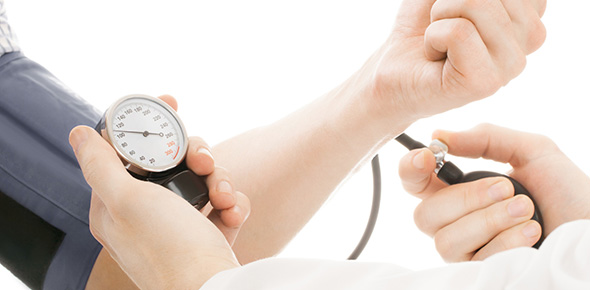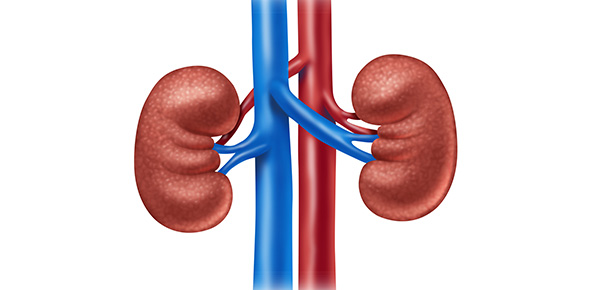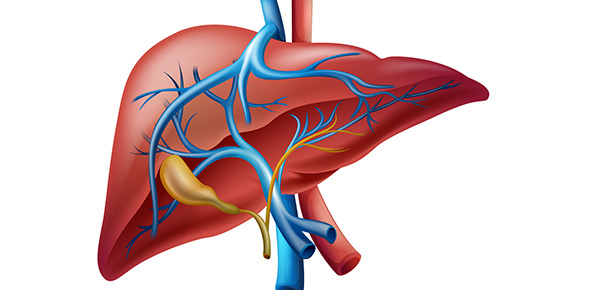Related Flashcards
Related Topics
Cards In This Set
| Front | Back |
|
Perform a history for breast exam
|
1. Pain?2. Lumps?3. Discharge?4. Rash?5. Swelling?6. Trauma?7. History of breast disease?8. Surgeries?9. Self care behaviors, breast self exams, mammograms
|
|
Mastalgia
|
Breast pain that occurs with trauma, inflammation, and benign breast disease.
Cyclic pain is common with normal breasts, oral contraceptives, and benign breast disease |
|
Galactorrhea
|
Spontaneous flow of milk from the breast, unassociated with childbirth or nursing. -Can be caused from medications, oral contraceptives, phenothiazines, diuretics, steroids, calcium channel blockers.-Ex: Paget's dz=starts with a small crust on nipple apex then spreads to areola
|
|
Mammography
|
A screening x-ray exam of the breasts (women age 40+)
|
|
Benefits of Breast Feeding
|
1. Provides the perfect food and antibodies for baby2. Decreases risk of ear infections3. Promotes bonding4. Provides relaxation
|
|
Decreased estrogen levels causes _____ in breasts.
|
Decreased firmness.-Rapid decrease in estrogen level causes actual shrinkage.
|
|
Assessment breast exam
|
1. Inspect-size, shape, symmetry (common to have a slight asymmetry in size, often left breast is slightly larger)-skin is smooth and even in color, no edema-skin retraction maneuvers-inspect axillae2. Inspect breasts as woman sits, raises arms overhead, pushes hands on hips, leans forward3. Inspect supraclavicular and infraclavicular areas4. Palpate axillae and regional lymph nodes-supine position-three patterns of palpation:a. vertical strip b. spokes on a wheelc. concrete circles 4. With women supine palpate, the breast tissue, including tail of spence, nipples. and areolae5. Teach BSE
|
|
Peau d'orange
|
Edema exaggerates the hair follicles, giving a "pig skin" or "orange peel' look
|
|
Supernumerary nipple
|
Normal common variation existing of an extra nipples on the thorax or abdomen
|
|
Description of breast lump finding
|
1. Location (use clock face)2. size (width x length x thickness)3. shape (oval, round, lobulated, indistinct)4. consistency (soft, firm, hard)5. moveable6, distinctness7. nipple (displaced, retracted?)8. skin over lump (dimpled, erythematous)9. tenderness10. lymphadenopathy
|
|
Best time to perform breast self exam
|
Right after menstrual period, around 4th through 7th day of menstrual cycle when breasts are smallest and least congested
|
|
Gynecomastia
|
Enlargement of breast tissue, occurring with use of anabolic steroids, meds, and some disease states-occurs normally in puberty
|
|
Permature thelarche
|
Early breast development with no other hormone dependent signs (pubic hair, menses)
|
|
Four groups of axillary lymph nodes:
|
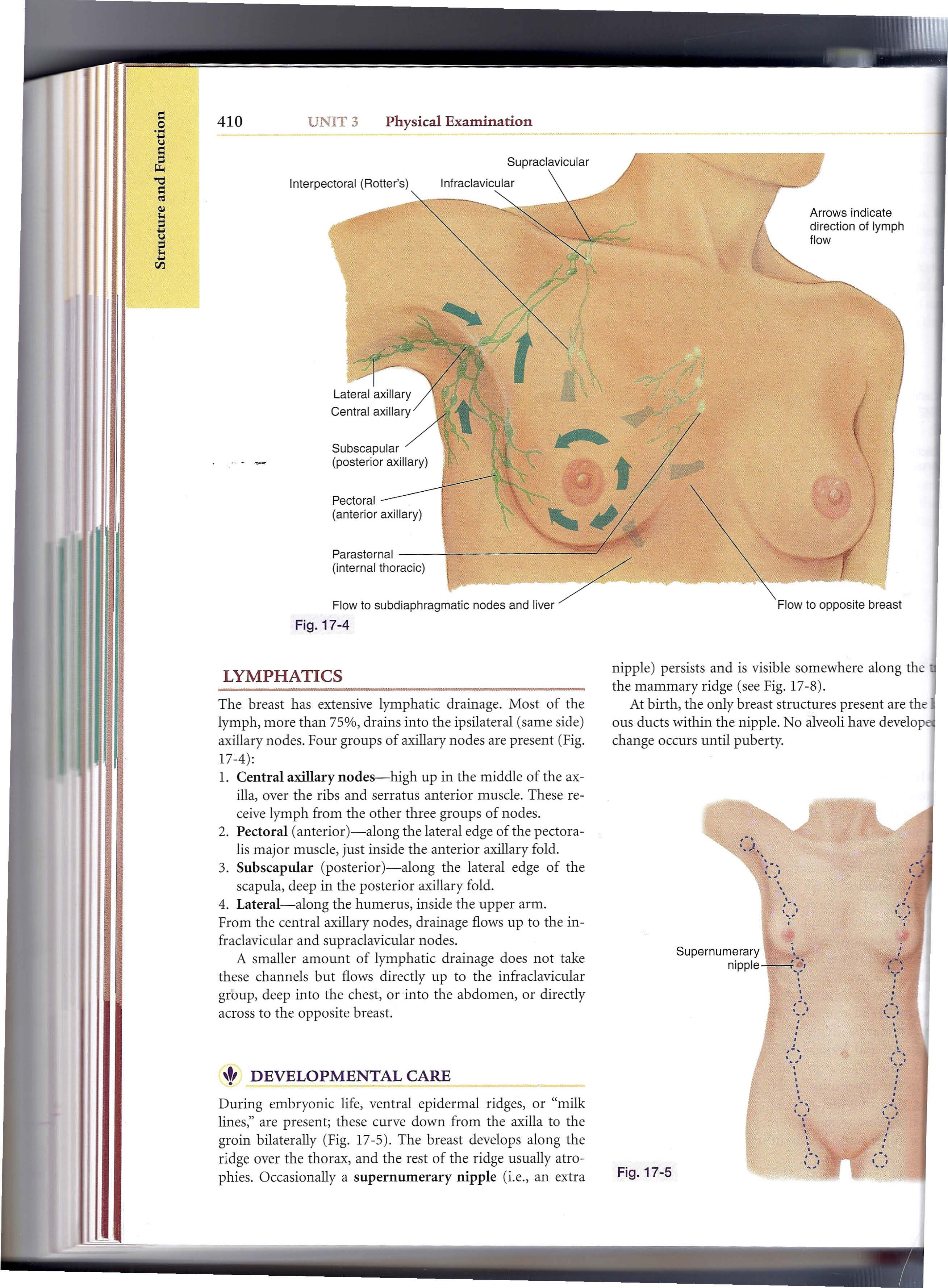 1. Central axillary nodes: high up in middle of axilla, over ribs and serratus anterior muscle. Receive lymph from other three groups. 2. Pectoral (anterior): along lateral edge of pectoralis muscle 3. Subscapular (posterior): along lateral edge of scapula 4. Lateral: along humerus inside upper arm *Most of lymph more than 75% drains into ipsilateral axillary nodes |
|
Breast quadrants
|
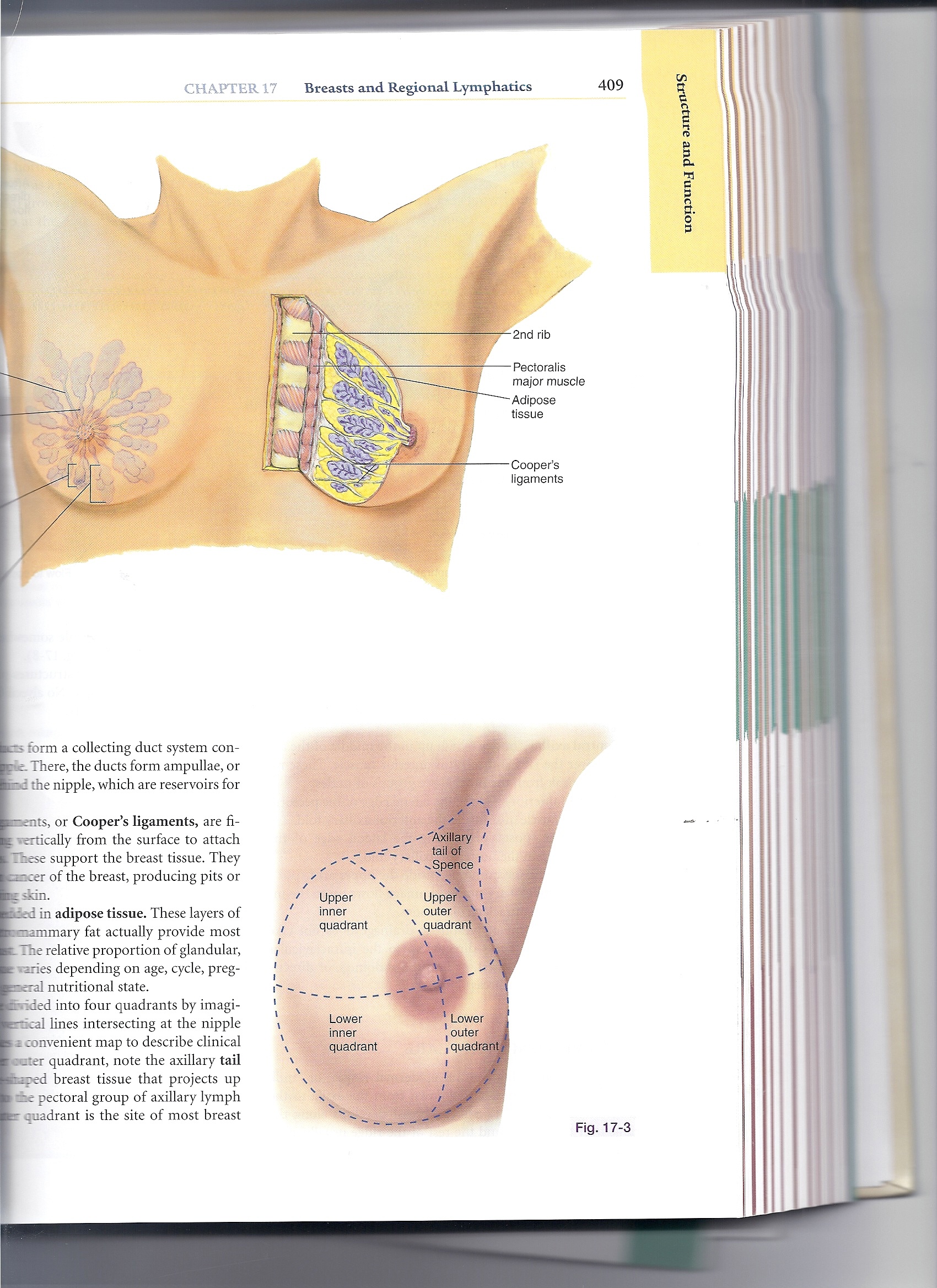 See image |



